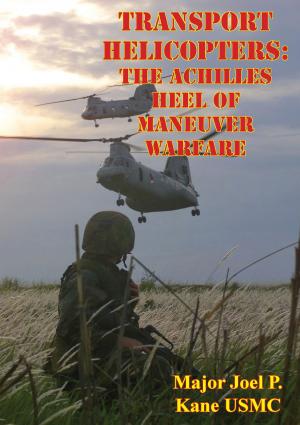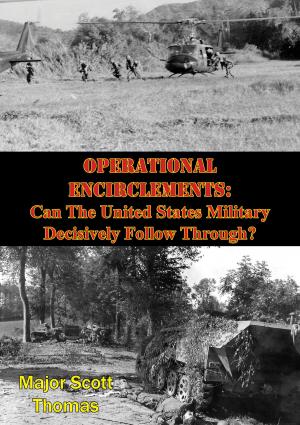Collateral Damage And The United States Air Force
Nonfiction, History, Middle East, Persian Gulf War, Military| Author: | Major Patrick M. Shaw | ISBN: | 9781782896791 |
| Publisher: | Tannenberg Publishing | Publication: | August 15, 2014 |
| Imprint: | Tannenberg Publishing | Language: | English |
| Author: | Major Patrick M. Shaw |
| ISBN: | 9781782896791 |
| Publisher: | Tannenberg Publishing |
| Publication: | August 15, 2014 |
| Imprint: | Tannenberg Publishing |
| Language: | English |
Minimization of collateral damage is an objective of the United States Air Force (USAF) whenever it conducts hostile operations. While the USAF has often expressed concern about causing collateral damage, its actions have not always reflected a consistent level of commitment. This essay explores the evolution of USAF concerns about collateral damage and examines the causes and effects of this unfortunate by-product of airpower. It concludes that the concerns harbored about causing collateral damage reduce the military effectiveness of airpower. This loss of effectiveness is not always important. For example, when a resource rich coalition conducts an air campaign against an inferior adversary, that coalition can discriminate in its application of airpower by allocating great effort to the avoidance of collateral damage. In a different context, such asymmetry may not exist. Commanders then might have to focus on achieving objectives while paying little attention to the possibility of collateral damage. In either case, collateral damage will likely occur, varying only in degree. The USAF can take actions which will help alleviate some of the causes of collateral damage. Improvements in the areas of planning and technology provide certain relief, but ultimately, political and military leaders must accept that collateral damage is an inevitable part of airpower.
Minimization of collateral damage is an objective of the United States Air Force (USAF) whenever it conducts hostile operations. While the USAF has often expressed concern about causing collateral damage, its actions have not always reflected a consistent level of commitment. This essay explores the evolution of USAF concerns about collateral damage and examines the causes and effects of this unfortunate by-product of airpower. It concludes that the concerns harbored about causing collateral damage reduce the military effectiveness of airpower. This loss of effectiveness is not always important. For example, when a resource rich coalition conducts an air campaign against an inferior adversary, that coalition can discriminate in its application of airpower by allocating great effort to the avoidance of collateral damage. In a different context, such asymmetry may not exist. Commanders then might have to focus on achieving objectives while paying little attention to the possibility of collateral damage. In either case, collateral damage will likely occur, varying only in degree. The USAF can take actions which will help alleviate some of the causes of collateral damage. Improvements in the areas of planning and technology provide certain relief, but ultimately, political and military leaders must accept that collateral damage is an inevitable part of airpower.

![Cover of the book Weapon Of Denial: Air Power And The Battle For New Guinea [Illustrated Edition] by Major Patrick M. Shaw](https://www.kuoky.com/images/2014/august/300x300/9781782898887-S21c_300x.jpg)
![Cover of the book Amicicide: The Problem Of Friendly Fire In Modern War [Illustrated Edition] by Major Patrick M. Shaw](https://www.kuoky.com/images/2015/november/300x300/9781786253705-WiuR_300x.jpg)



![Cover of the book I Flew For The Führer: The Story Of A German Fighter Pilot [Illustrated Edition] by Major Patrick M. Shaw](https://www.kuoky.com/images/2015/november/300x300/9781786256478-64hF_300x.jpg)


![Cover of the book D-Day 1944 - Air Power Over The Normandy Beaches And Beyond [Illustrated Edition] by Major Patrick M. Shaw](https://www.kuoky.com/images/2014/august/300x300/9781782898870-gH4f_300x.jpg)
![Cover of the book Scouts Out! The Development Of Reconnaissance Units In Modern Armies [Illustrated Edition] by Major Patrick M. Shaw](https://www.kuoky.com/images/2014/august/300x300/9781782899129-W8Ew_300x.jpg)

![Cover of the book Last Flight From Singapore [Illustrated Edition] by Major Patrick M. Shaw](https://www.kuoky.com/images/2015/november/300x300/9781786257505-nFT2_300x.jpg)


